In this author talk, executive editor Marc LiVecche speaks with award-winning military historian Richard Frank about Tower of Skulls: A History of the Asia-Pacific War, published earlier this year. The first of a planned trilogy, Tower of Skulls offers Frank’s grim reappraisal of the Second World War’s Pacific Theater. Topics include the ghastly nature of Imperial Japan’s war making, the story of wartime China and the crucial and under-acknowledge role China played in helping defeat the Japanese, the impact the deeply flawed General Joseph Stilwell had on both China’s ability to effectively prosecute the war as well as on China’s future, the heroism of British General Marshall Slim, and the obscene death toll of civilians under Japanese occupation throughout the Pacific. In Frank’s ambition to count “all the dead” and to insist on their shared humanity, a context is formed in which to weigh the heavy decisions on how to end the costliest war in human history as quickly as possible.
See also:
Tower of Skulls: A History of the Asia-Pacific War, Volume 1: July 1937-May 1942
Downfall: The End of the Imperial Japanese Empire
Richard Frank is an internationally acclaimed historian of the Asia-Pacific War. He was an aero rifle platoon leader with the 101st Airborne Division in Vietnam and is the author of Guadalcanal, Downfall, and other works. He is a member of the Board of Presidential Counselors of the National WWII Museum.
Rough Transcript
LiVecche: Hello everybody. I am Marc LiVecche, executive editor of Providence, and I am the Stockdale research fellow at the Stockdale Center for Ethical Leadership at the US Naval Academy, and I am thrilled to be speaking today to the historian Richard Frank. We are going to begin our discussion of his latest book Tower of Skulls. Richard is also the author of a book called Downfall, which I think is the premier history of the conclusion of the war. And I would like to take us today from a discussion of Tower of Skulls particularly to how it sets the context for the end of the war. So, Richard, thank you very much for being with us today.
Frank: Well, thank you very much for having me.
LiVecche: It’s great to speak with you. You list in the introduction to Tower of Skulls that what you are doing is a reappraisal in some ways of World War II from the first shots fired in July of 1937 to the fall of Corregidor in May of 1942. Now I should say that this is a trilogy. You’ve produced the first volume. The first volume has to end someplace, but one senses that the decision to end where volume one does is not arbitrary. So, what does that period of time signify?
Frank: Well, it’s basically the story of China alone. China enduring; China contributing in ways that we’ve neglected for a very long time. The specific decision about where to end this first volume was very deliberate. The surrender of Corregidor occurs on the 6 of May 1942. By that evening, Japan’s empire arguably is an absolute zenith. The very next day, 7 of May ’42, is the first day of the main action of the Battle of the Coral Sea. And this is basically like the Japanese are up here and now the descent, which at the first, the glide path is pretty shallow to start. And the second volume goes to August of ’44 into Marianas Campaign. The third volume will pick up in September ’44, but will not end in September ‘45 with a formal surrender. It’s designed, the whole arc of this trilogy, also is intended to talk about how what happened from ‘37 to ‘45 shaped the world we live in right down to today. The most conspicuous aspect about that is that quite arguably there would be no People’s Republic of China without Japan’s war in China in 1937 to my authority, for it is no less than Mao Zedong who said that repeatedly, including to the Japanese prime minister in 1972. Basically, “If you guys had not run that war against the China, the nationalists, I probably never would have triumphed.”
LiVecche: So, when we say reappraisal, we mean very much a corrective. You note early on that very often the popular conception of the War in the Pacific is a war that was fought between Japan and America. And for many of us, even more specifically, well it was a war that was fought between Japan and US Marines. We don’t know that the full context. So, if a reappraisal is a corrective, what are some of the misconceptions of the War in the Pacific that you’re particularly interested in setting right? What’s the better historical story that you’re telling?
Frank: Well, really what I’m essentially doing by calling it the Asia-Pacific War, what I’m attempting to do is create a narrative that writes back in this titanic struggle that’s primarily on the Asian continent. What I call this is the “Arc of Asia” in 1937. It ran from India, which at that time included Pakistan and Bangladesh, east across China to Japan and the Western Pacific and southeast to what’s now Indonesia. And in that swath of the globe at that time, there were over a billion people. And the total population the world in ‘37 was estimated usually to be about 2.3 billion. So, you’re literally talking about half the population in the world. And that whole swath of the “Arc of Asia, as I call it, was overwhelmingly people living in some sort of form of colonialism. There were only four nation states that had some claim of sovereignty, what was Siam in ‘37 and certainly became Thailand and japan had actual sovereignty. You had Mongolia which was a Soviet client state, had no real sovereignty. We had China which had very fractured sovereignty. And the Philippines, a very special case. They were an American colony, but they’d been promised independence in 1934 in about a decade. Which had a very powerful effect upon how the Philippines reacted to the war. And ultimately when Japan’s empire is at zenith as best I can calculate, including about 260 some million Chinese, the Japanese had within a dominion about 516 million people. By contrast, at the max, Hitler’s Germany had control of maybe 366 million people. So, the scale of this is not only important, it’s gigantic. And the notion we’ve lost, entirely lost sight of, is this whole dimension of the Second World War, to me is just amazing.
LiVecche: That’s right. So, what you’re painting very clearly is a story that involves China in extraordinary ways. What is the Chinese story that needs to be told?
Frank: Well, there are several stories. I think the main thing to bear in mind is that in 1937, I call China the “fractured state.” And the Japanese occupied Manchuria, and they had come to dominate some of the provinces down towards the Great Wall. The rest of China was not already in sort of this standard narrative we’ve been given now for some time, this notion that in ‘37 you already have this either active or incipit civil war between the nationalists and the communists. And in fact, in 1937, the nationalists are by far the biggest faction in China. They have seven provinces and about 170 million people, which is over a third of the 450 million people in China. The Chinese communists are extraordinarily low level at that point. This is after the Great Leap, and Mao is now up in somewhere in the northwest part of China. This part of China is poor even by Chinese standards. And he actually controls at that point about 1.45 million people, which is not three percent of the population, it’s three tenths of one percent. I mean, that’s one of the other long-term arcs of this is that it’s extraordinary how the war is going to affect and how Mao is going to exploit the war to develop this enormous power base for the Chinese communists, the Red Army by 1945. So, China’s in a very, very low state at that point. At the same time, the Chinese nationalists have sort of reached this sort of tipping point after more than a century of humiliation that finally, and it’s by no means uniform, you’ve got large swaths of China in the hinterland where nobody cares what’s going on internationally. But in the areas of China along the seaboard and the more sophisticated areas of China, there’s this growing consciousness of nationalism, and they need to restore their sovereignty. And that’s very much what Chiang Kai-shek is devoted to doing.
LiVecche: As a reappraisal, as a corrective, were there things in your own studies as you’re digging into the new material? And you had discussed earlier with me that a part of why your volume comes at a good time is we simply now have access to more information than previous historians had. As you began wading into this new material, was there anything that surprised you? Your book is constantly surprising me. Was there anything in your research that threw you off?
Frank: Well, there were quite a number of things, but one of the most conspicuous I think is Joseph W. Stillwell, who became the American proconsul in China. And the arc of China’s reputation, the nationalist China reputation, went from a very high point in ’37, and then began to decline and ’43, and sort of fell off the curve in ’49. And Stillwell of course famously was highly critical of Chiang Kai-shek and the nationalists. So, I was thoroughly marinated in that version of history starting from the journalistic accounts, the army official history series, and I think the epitome was Barbara Tuchman’s Stillwell and the American Experience in China. Now I see after we got this other information that the basic problem was the basis for the histories that were written in that fashion were the information that Stillwell and his accolades had created. And once you get Chinese material, particularly once in 2007 when Chiang Kai-shek’s diaries were published, even historians in the People’s Republic of China were saying it just changed everything, because now all these mythologies about what he thought or if he didn’t want to fight the Japanese when he did, he just realized it was going to be a titanic endeavor. And Stillwell basically had no real, I mean, he had a little brush as a platoon leader in China in the 1920s or 30s, he had no experience and he’s trying to lead Chinese armies, and the Chinese generals have been fighting the Japanese for four or five years, and you wonder, and he issues this operational concept in Burma which is just totally screwed up. And so, far from the Chinese being unwilling to follow them, they’re saying, “This is stupid. We’re not going to follow this.” So, that was probably the single most startling thing. And also, the other thing is to realize that he’s basically almost exactly paired with British General William Slim. Now everyone recognizes him as one of the very greatest generals of World War II. Some would argue, I would agree, he was really the best British General of World War II, more so than Montgomery considering what he did with what he had and where he was. So, yeah, that’s probably the singular surprise I would point out.
LiVecche: Well, you’ve talked about your own military experience and a recognition of the fog of war and that in the heat of battle, it’s hard to have a good understanding of the information at hand. But you do draw this remarkable dichotomy between Stillwell and Slim, whereas you have this anecdote where Slim goes to a Chinese general and asks “Well, if one way to learn to fight the Japanese is to find somebody who’s beaten them in battle, how about we go talk to the locals, to the people who know?”
Frank: Right.
LiVecche: It’s an extraordinary story.
Frank: Yeah, when I read that, I was thinking this is so insightful. I mean, Slim has the hubris, the common sense to say okay I’ve never dealt with the Japanese before. Who should I talk to? Well, somebody who beat them. And Stillwell comes in with the notion that “I’m the fount of all wisdom, just listen to me and we will be triumphant.” When you get that picture, then you realize the limitations. Now, there are a lot of things about Stillwell that are, from an American standpoint, sort of this blunt, bluff, no pretense guy, that always appeals to Americans. But there’s other dimensions to leadership than that.
LiVecche: Now, and I don’t mean this to turn into a beating up on Stillwell session, but one rarely reads a history that leaves you thinking one personality in one location and one moment in time has had a tremendous influence on the future. I’m sure some of that is too strongly said, but Stillwell’s decisions seem to have a profound effect on the future of China. Is that fair?
Frank: It did. It did in important ways. And also, the other thing is that basically the whole framework for the narrative about China from 1942 onward was crafted through the lens of as though you’re looking through the eyes of Stillwell and the inability to recognize that there are definite problems with Stillwell’s view and understanding. And there’s a really, I’ll get to this in the second volume, Chiang after the Burma disaster is thinking about asking for Stillwell’s recall and madame Chiang talks him out of it. And that may be one of the greatest disastrous decisions that Chiang made in his whole reign. It’s also an interesting commentary that madame Chiang was the most powerful woman in World War II, in terms of someone who actually directly influenced decision making at the highest levels. There’s no other woman who was in a comparable position, and this is in China, which is not exactly a gender-neutral country at that time. So, the sea of ironies you can get into in something on this size of a canvas is just amazing.
LiVecche: That is striking. Just one more question on this trajectory. If I were a newly commissioned lieutenant and I came to you and I said, “Sir, what could Stillwell teach me about military leadership?”, what would be the things you might say, to the positive or to the negative? What are the lessons that Stillwell has?
Frank: The thing I would say is to read William Slim’s memoir Defeat into Victory. It’s one of the all-time great senior officer memoirs. It’s insightful. It’s honest. It’s just an extraordinary piece of work. And people, historians certainly, have recognized this for a very long time that Slim’s memoir, not only Slim’s performance but Slim’s memoir, is so incredibly insightful. I would elevate that above any other senior officer, certainly on the allied side during World War II. If you want to get leadership lessons, go to Slim.
LiVecche: Go to Slim. Very good. You and I first spoke because I, as some of the listeners know, I’m writing a book defending the dropping of the bomb on Hiroshima. And obviously I was attracted to Downfall because it helped set the context for the end of the war. But in interviews that you’ve done about Tower of Skulls, you’ve used this phrase that I have found striking where you said you wanted to count “all the bodies.” Where does that phrase come from? What do you mean?
Frank: Okay, well basically I actually had this in mind when I did Downfall, although I didn’t articulate it directly. I mean, one of the things I do in Downfall that sets I think that work apart from a lot of the others particularly the area I call that most Americans living today have no idea that for 20 years after the war, there was no great controversy about the use of the bombs in the US. It only began from about the mid-60s, and the literature of the history that was produced at that time had come under this pejorative adjective of revisionism or revisionist. And I don’t agree with that at all, because any historian has new evidence, new interpretation, revisions. I just call it the critical literatures that I need to make that term clear. Now, rather than why I don’t use the term revisionism, but basically what I thought then and what I did then was I believed that two fundamental principles to understand, and above all, to judge these events are to first count all the dead and secondly, and just as important, to treat all the dead as sharing a common humanity. So, when I did Downfall, the opening chapter is this searing stomach churning account of tens of thousands of Japanese dying in this incendiary attack in Tokyo in March ‘45. In the chapter on Hiroshima, I provide an extended discussion of exactly what sort of hell that was on the ground, both immediately and on the latent deaths. In fact, so much so that one of the volumes in the critical literature called “Hiroshima Shadow” when it came time to describe graphically what happened in Hiroshima, they didn’t go to one of their colleagues, they used my work to describe it. So, I wanted to make it very clear that when I talk about counting all the dead and treating all sharing, I very much mean the Japanese. But what I also got into in Downfall was this enormous death toll that Japan caused in the Asia-Pacific War. And at the point I wrote Downfall, I didn’t, we still didn’t, have all the data. What it boils down to is this, we think, using pretty conservative numbers, that the Asia-Pacific War resulted in the deaths of about 19 million human beings, and of that 19 million, maybe pushing towards the high end, a million to 1.2 million were Japanese. Which immediately tells you that for every Japanese non-combatant who died, there were 17 or almost 18 other non-combatants. They were overwhelmingly other Asians. About 12 million of them were Chinese, and for the Chinese, if you take the eight years, about three thousand days, I mean, that’s four thousand dead Chinese every single day for eight years that the war went on. Simple demographics tells you that about a quarter of them, or more than a quarter of them, were children under 14. So, that’s a thousand dead Chinese kids every day. The other parts of it, almost 6 million, this is after December ’41, and that also works out mathematically to just about well actually over four thousand a day. So, that’s eight thousand deaths per day of non-combatants who are not Japanese. About two thousand are children under fourteen. And well, I want to make it very clear that I’m going to count all the Japanese dead. I’m not going to neglect and ignore. And what’s very unfortunate, my view about a lot of this literature, is that although they’re very graphic, they count the dead Japanese, they provide very graphic descriptions of and humanize what this really means in terms of individuals and people, but when you turn to all the other dead the non-Japanese not convinced, you seldom get numbers or even references and you never get the sort of searing depiction of what this means. I mean, look at all this literature for one graphic description of one dead Chinese child. Look everywhere. You won’t find it.
LiVecche: That’s right, and context matters. And when we have breezy discussions about not rushing to end the war with the bomb, every day that ticks by can be counted 8,500 times in lost souls, and that somehow ought to matter in our deliberations.
Frank: Right. And let me emphasize that the American leadership at that time, we sort of talked about this before, you have to remember that they didn’t know specific numbers but they sure as heck were enormously aware of the fact that enormous numbers of people were dying every single day the war went on. And one of the things one of my colleagues, Thomas Doherty at Brandeis, pointed out to me that I thought was quite telling was that he went through all the newsreels Americans were watching, and the average American was going to the movies twice a week in the ‘30s, and every standard program had a newsreel with it over here. And as Tom pointed out when he went through all these things, what he was struck by was that the amount of really visceral graphic imagery of atrocity the average American was seeing was much fuller and richer and stomach churning from Asia, particularly Japan and China, than anything they were saying about Nazi Germany all the way through Pearl Harbor. So, Americans, and in fact, one of the things I talk about in Tower of Skulls is it’s not like suddenly the Japanese attack Pearl Harbor and the American people become very angry. They were already in a very high state of anger about what they were saying about what had been going on particularly in China well before Pearl Harbor.
LiVecche: That’s right. And your book drives that home. You have images of Japanese bombardments; graphic images of the people just littering the steps in one of your photos. And that drives that story home. There’s a difference in being defeated and knowing you’ve been defeated and surrendering. And toward the end of the war, that distinction seems to be operative. When did the Japanese know they were defeated, and why didn’t they surrender?
Frank: It’s an interesting point. A very distinguished historian, Edward Drea, pointed out that at the time of the fall of Mariana Islands in between July and August of 1944, the war diary of the operations section the imperial army this “secret war diver” bluntly says we’ve lost the war in terms of military measure. But defeat and surrender are two entirely different things, just like in the Civil War. The Confederacy effectively was defeated by June-July of 1863, and they don’t surrender until April of 1865. Germany is almost the same thing. Mid-1943 and they don’t surrender until literally we put boots all over Germany in April-May 1945. So, talking about saying well the Japanese were defeated, but that doesn’t mean they’re going to surrender. And from the Japanese standpoint, this is sort of a curious thing. The more nationalist sort of right-wing part of the Japanese political spectrum, I was told they, although there were things about my book Downfall they didn’t like, one thing that did warm their hearts was I pointed out the strategy of the Japanese adapted in January 1945. They recognized that if they couldn’t change the military balance, they were not going to be able to obtain an end of the war that they would find satisfactory. And they believed the only way they could do that was to either defeat or inflict such huge casualties on the initial American invasion that the American will to pursue the war to unconditional surrender would be broken. And they correctly estimated that we were coming to Southern Kyushu, and they made this huge build-up in Southern Kyushu. And then from the American side, when the radio intelligence starts spilling out, these identifications of Japanese units, particularly in the last two weeks of July and the first days of August ’45, and suddenly instead of going in with this overpowering superiority, it now looks like we’re going in basically at just a guaranteed bloodbath. So, as I said, some of the Japanese were thinking well see, our guys were not so dumb after all. They had actually worked out a strategy that the Americans recoiled when they realized that this is what invading Japan might entail. I’ve gone further. To me it’s very difficult to imagine anyone who conceivably would have been president by July, late July-August of ’45, you could put all of them on the spectrometer looking at what Mr. Truman was looking at, would not have chosen to take the next measure he could and hope that it ended. I mean, in some ways what we’re doing in 1945 is doing everything we’ve already been doing, blockade, bombard, we’re going to invade, and we’re going to add atomic bombs, and hope that in some point along this path it’ll finally be enough for the Japanese leadership. And one final point on this, one thing that is not noted in the literature which should be highlighted in my view is that as the Joint Chiefs of Staff noted in April ’45, we were seeking unconditional surrender. But the two big problems they found with that was first of all, no Japanese government had ever surrendered in the history of Japan. Now in the Japanese count, that’s two thousand six hundred years, going back into history and mytho-history. The second thing was no Japanese unit had ever surrendered any skirmish, battle, or campaign of the war. So, if you’re looking forward, as American leaders were, towards the end of the war, there was no clear end in sight. There was no guarantee that we would get what I call this “organized capitulation” of Japan’s government, armed forces, and the prospect about what would be entailed to eventually defeat up to 5 million Japanese under arms in Japan, the Asian continent, and the Pacific. Which is what Mr. Stimson talks about when he uses the famous million number. That’s really what that’s about. If you’re looking at that, and you wonder why Mr. Truman was feeling enormous pressure to bring the war to a successful conclusion and not do that by incredible levels of bloodline both American and Japanese.
LiVecche: That’s right. And not forgetting your earlier point that the Kyushu invasion was going to take place November 1st, we dropped a bomb early August. That’s three months of a continuing ticking away of lost lives in occupied land, right?
Frank: Right, and there’s more. I talk about in Downfall, there are other dimensions to this. It turns out the Japanese rice crop collapses in ’45, and this is going to put the Japanese urban population in an extremely dire situation that first year after the surrender. And that’s a whole separate story, but one of the things I’d like to emphasize in people who don’t know this part of the story is that we get to Japan, the Japanese leadership that we’re dealing with says, “We’re facing famine in ‘46.” At first, we’re skeptical about that. The Japanese don’t have a high level of credibility with us at that point. But by the end of ’45, the occupation authority, including MacArthur, recognize that the Japanese are correct. You can do the numbers on the food intake, and by the summer ’46, the Japanese are going to be in a very dire situation. The only way to save them is to send American food. And eventually with MacArthur spearheading it, one of the most noble things he ever did, and Mr. Truman approving it, we’re feeding 18 million Japanese urban dwellers in July, 20 million in August, and 50 million in September. That’s between one in four and one in five of the Japanese population. And we estimate that that saves 11 million Japanese lives, which makes you think about that compared to atomic bombs. It’s an incredible story.
LiVecche: That’s fantastic. It’s an incredible story. It’s a story you tell incredibly well in both Downfall and in the Tower of Skulls. I commend both volumes to our listeners. I’m looking forward to parts two and three. Richard Frank, thank you very much for your time.
Frank: Well, thank you very much for having me. Good luck with your work, too.
LiVecche: Thank you.

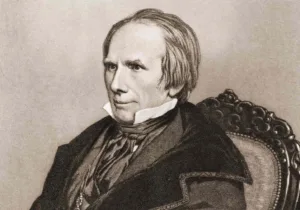
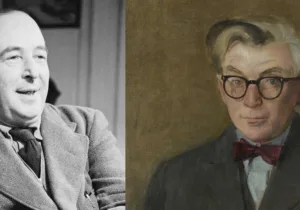
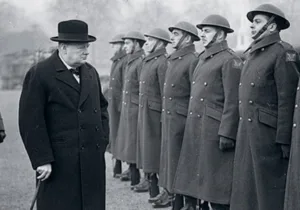
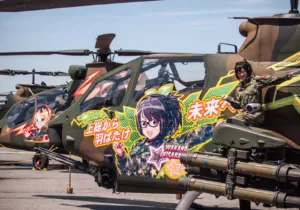
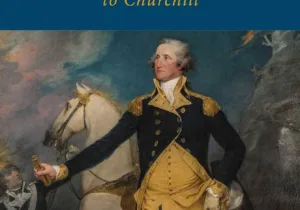

 Sponsor a student for Christianity & National Security 2024
Sponsor a student for Christianity & National Security 2024